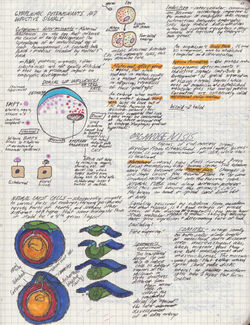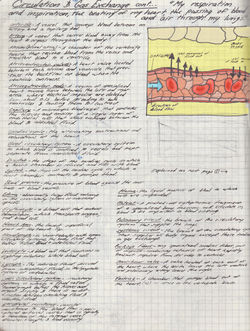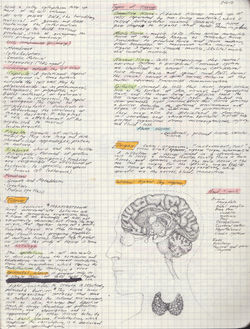MB
VISUAL WORK
SELECTED NOTEBOOK ILLUSTRATIONS
“High horns, low horns, silence, and finally a pandemonium of trumpets, rattles, croaks, and cries that almost shakes the bog with its nearness ... A new day has begun on the crane marsh. A sense of time lies thick and heavy on such a place ... Our ability to perceive quality in nature begins, as in art, with the pretty. It expands through successive stages of the beautiful to values as yet uncaptured by language.”
— Aldo Leopold
 |  |
|---|---|
 |  |
 |  |
 |  |
 |  |
 |  |
 |  |
 |  |
 |  |
 |  |
 |  |
 |  |
 |  |
 |  |
 |  |
 |  |
 |  |
 |  |
 |  |
 |  |
 |  |
 |  |
 |  |
 |  |
 |  |
 |  |
 |  |
 |  |
This is a collection of nearly 60 selected pages from two of the most colorful volumes of my studies in science. I have perused extracurricular scientific and mathematical studies for a number of years; sometimes I read/work through textbooks and articles, I occasionally sit in on classes and lectures, I worked in a molecular and cellular biology lab at a local cancer research center seasonally for a number of years. How tacit understanding and rigorously logical analysis co-operate within the scientific method is a point of
interest to me; as are Polyani's writtings on this. Combining science, math and art allows me to grasp the application of ideas and visualize terminology and equations in a unique way. Including visual creation into the learning process can be an incredibly rewarding experience. I believe that nature, and our understanding of it, is incredibly valuable, for the sake of its profound beauty and the potential applications of that knowledge for good.
Some of these images have used visual and written reference from:
Campbell, Neil A., and Jane B. Reece. "Biology (8th Edition)." San Francisco: Benjamin Cummings, 2007.
Bruce Alberts, Alexander Johnson, Julian Lewis, Martin Raff, Keith Roberts, and Peter Walter. "Molecular Biology of the Cell (4th Edition)." New York: Garland Science, 2002.
Culp, M., Canisius College Biology Department. "BIO102 Laboratory Manual." Lab handbook. Canisius College. Buffalo, NY. 2010. Print.
"Thermodynamic System." Wikipedia: The Free Encyclopedia. Wikimedia Foundation, Inc. 20 Oct. 2013. Web. 2010. <http://en.wikipedia.org/wiki/Thermodynamic_system>
Harold, Franklin M.. "The Vital Force: A Study of Bioenergetics." New York: W. H. Freeman and Company, 1986.